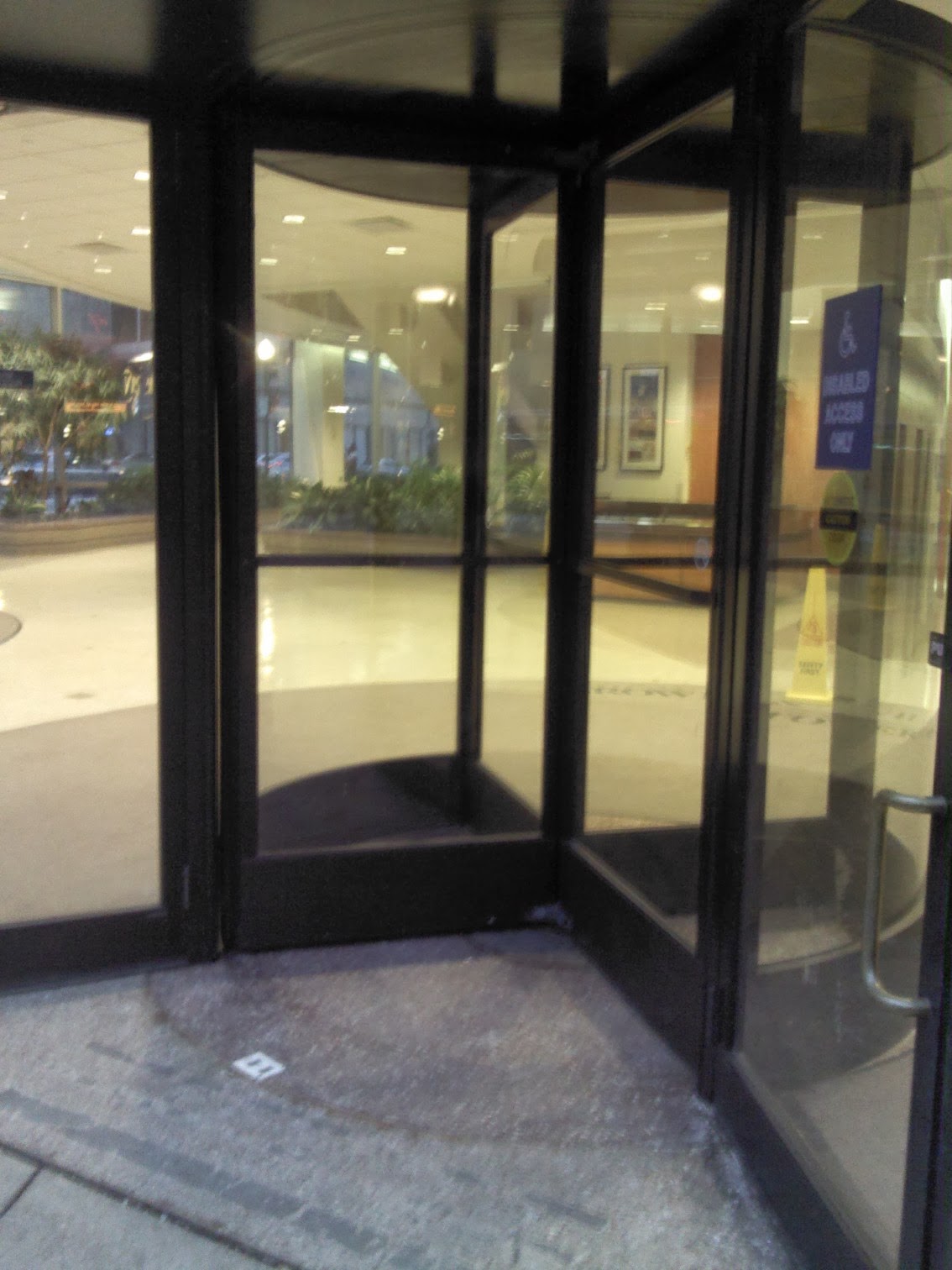Why is Your Company a Revolving Door? - Turnover and ROI series: Part I-
Rate of Turnover
 |
© 2014 AR_HRCom-Al_TO |
According to the SHRM 2012-2013 benchmarking database, the average turnover was around 10%, with the highest being in services of accommodation, food and drinking places at 30% and five year average tenure, and the lowest being in the arts, entertainment and culture industry at 5% TO and average of nine year tenure. Placing at 10% are the finance, local government, waste management and utilities sectors. All industries average 13% and eight year average tenure. Voluntary turnover in all industries was noted at 9%, with the highest being 26% in services ( accommodation, food and drinking places) and 4% in arts.
To me, it seems that red flags are often ignored. Let's take the case of this organization, which after completing all projected and required hires finds itself struggling with absenteeism and abysmal turnover within less than eight weeks. Bad weather cannot be blamed for an extended period of time for the issue. And when it causes a breakdown in quality of work process, it becomes a problem. This later is concretely recognized by another search for candidates for numerous positions. What went wrong? Early turnover is a sign of dysfunction.
If your organization is a revolving door, because of voluntary and/or involuntary exits, there is a strong need for reassessment. You cannot find the answer through those who stay, much less through formal exit interviews, assuming you had the chance to conduct any. Your answer is in your honest reassessment, such as:
1- Who performed the hiring?
Do all your hiring managers have the same or equivalent percentage of "defection" or turnover? Either it's a yes or a no, when was your last refresher course on interviewing methods? Do your managers truly know what skills are needed for the vacant positions? Do they compromise on operational requirements and make hasty hiring? Bad hiring causes high turnover, not bad hires.
2- Did you call the "defecting" employees?
Often, exit interviews do not reflect realities. Why would an employee want to burn bridges? The same, you won't learn much from employees who decide to stay. The interesting question would be: why do they stay? and who is staying? Give yourself an honest answer. Then, call the "defecting" employees. What company are they joining?
3- What is your compensation policy?
4- Did you deliver what you have promised?
You can put all your efforts in recruiting and hiring but if you fail to deliver what you have promised two things will undoubtedly happen . 1) You will have some unhealthy attrition. 2) you will tarnish your brand.
5- No analysis has a value without comparison or benchmark.
How do you compare to your peers, your partners, your competition, other organizations of similar size in your industry?
6- And finally, YOU as company, as HR, are what Managers ARE, the reflection of what they SAY.
Yes, whatever happened, was said, was promised and misdelivered, it was most likely done by managers, with HR managers sharing their part of responsibility. How is that possible you could argue. Well, how about orientation and communication practices, to say the least? The policy is in place, most probably, but practices could differ. Is the HR department evolving around administration?
Managers, at various levels, not necessarily the company, are accountable for TO.
So, yes, you are a revolving door, but employees do not leave a company, as Kris Dunn says in his latest writing, they leave those who represent it: the department manager who micromanages, the HR manager who is a poor communicator, the VP who is autocratic...You get the idea.
 |
© 2014 AR_HRCom-Ad_TO |
The consequence is simple: you will struggle at recruiting and retaining in the future. More precisely, in a poor economy, you will be able to hire, but you will not be able to retain your hire. You will remain a revolving door. In fact, chances are that your big great company's name is also already tarnished inside, because those who stay firmly believe that you - the managers- represent the company and act according to company policy. Reasonable thinking.
Especially if your turnover rate is staggering, it is time to make a more detailed evaluation. You do not want a blurry picture of the situation. The following is a break-down analysis guideline from Andrée Laforge:
- Voluntary Exits;
- Retirement;
- Involuntary exits;
- TO per level of hierarchy (status, classification);
- TO of high performers;
- TO of newly hires - both voluntary and involuntary-
The cost is a high price. Stay tuned. In the meantime, how is your turnover? Can you still turn the clock?
En Synthèse...
Une Porte Tournante sur les Départs

© 2014 AR_HRCom_Ad_TO

© 2014 AR_HRCom_Ad_TO
Le taux de roulement est un facteur essentiel pour toute entreprise. Idéalement, il devrait être maintenu à 10% pour rester sain. Ce n'est pas toujours le cas. Un taux de roulement à la baisse est bon, mais s'il équivaut un 0%, cela devient un signe de stagnation.
Selon une base de données de SHRM ( 2012-2013), le taux de roulement varie de 5% à 30% selon les secteurs.
Une chose est importante: les gens ne quittent pas une Entreprise: ils quittent le patron. Malheureusemnt, que ce soit le patron direct ou indirect, il/elle represente l'Entreprise aux yeux de l'employé. Votre image de marque en pâtit.
Mais aussi, quelle que soit l’attractivité d'une entreprise donnée, quand le patron et les conditions de travail deviennent intolérables, toute personne saine quittera. Kris Dunn en a donné un exemple perçant de chez Apple dans un récent billet.
En tous les cas, votre analyse doit être nuancée pour être valide. Comme le précise Andrée Laforge,
Selon une base de données de SHRM ( 2012-2013), le taux de roulement varie de 5% à 30% selon les secteurs.
Une chose est importante: les gens ne quittent pas une Entreprise: ils quittent le patron. Malheureusemnt, que ce soit le patron direct ou indirect, il/elle represente l'Entreprise aux yeux de l'employé. Votre image de marque en pâtit.
Mais aussi, quelle que soit l’attractivité d'une entreprise donnée, quand le patron et les conditions de travail deviennent intolérables, toute personne saine quittera. Kris Dunn en a donné un exemple perçant de chez Apple dans un récent billet.
En tous les cas, votre analyse doit être nuancée pour être valide. Comme le précise Andrée Laforge,
"le taux de roulement est un indicateur clé pour aider à comprendre tous les aspects du cycle de la gestion des talents à l’intérieur d’une organisation. Je vous suggère de regarder cet indicateur en conjonction avec d’autres indicateurs tels que :
Et analyses plus poussées suggèrent calcul de coûts. A la prochaine, donc!
- le coût du roulement,
- le taux de démission,
- le taux de départ à la retraite,
- le taux de roulement involontaire,
- le taux de roulement par niveau hiérarchique,
- le taux de roulement des hauts performants et
- le taux de roulement des nouveaux recrus (volontaire et involontaire).
Un taux de roulement élevé peut être alarmant. Assurez-vous de vous comparer avec des organisations de votre secteur d’activités et de votre taille. Évaluez l’état de l’emploi dans votre région. Faites des analyses plus poussées, vous en ressortirez mieux équipés pour faire face à la musique!" (Vous voulez mesurer le ROI de vos initiatives RH? Une de vos armes, le calcul du coût du roulement.- LinkedIn -)






Comments
Post a Comment